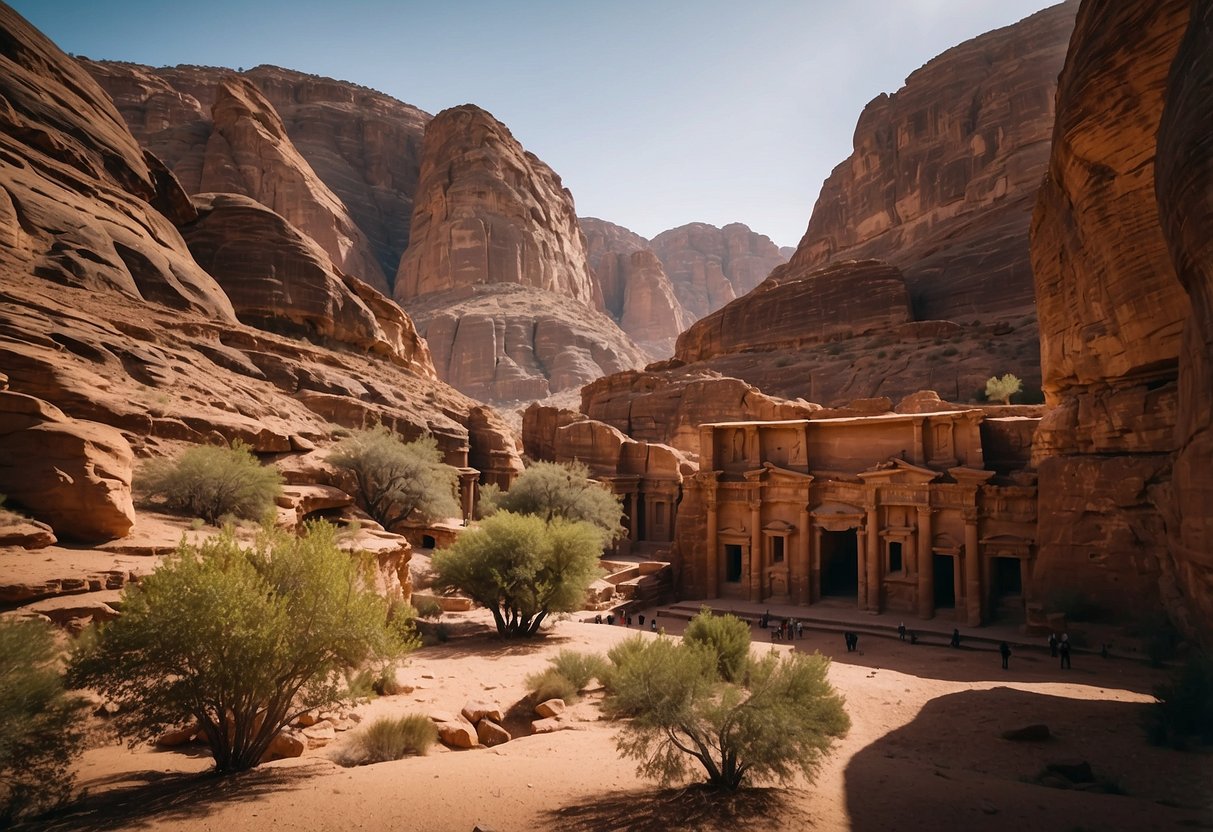
Exploring Options from Aqaba
Aqaba, a coastal city, is around 125 kilometers from Petra. Unlike the route from Amman, this journey is shorter and allows for more flexibility in travel. Car rentals are readily available, providing the freedom to explore at your own pace.
Shuttle services and buses, including local buses and tours, offer regular routes to Wadi Musa, the gateway town to Petra. The bus ride usually takes around two hours. Tickets can be purchased from bus stations or tourism offices. Taxis are another option, though they tend to be pricier than buses.
Connecting through Israel
Traveling to Petra from Israel involves crossing an international border, with the most common route starting from Eilat. After crossing at the Yitzhak Rabin/Wadi Araba border, visitors can either rent a car or take a taxi to Petra.
Bus services and organized tours also operate from the border. The trip from Eilat to Petra usually takes around two hours. Border crossing regulations require attention to visa requirements, fees, and potential waiting times. Being informed about these can help avoid unexpected delays.
The First Glimpse
Arriving at Petra, visitors are often overwhelmed by the dramatic scenery that slowly reveals itself. From the winding pathways of The Siq to the awe-inspiring sight of Al-Khazneh, these first moments set the stage for an unforgettable experience in Jordan’s ancient city.
The Siq’s Marvels
The journey often begins with a walk through The Siq, a narrow and winding gorge that stretches for about 1.2 kilometers. This pathway, framed by high cliffs, provides a dramatic introduction to Petra. Steep walls that rise up to 80 meters on either side create a sense of anticipation and intrigue.
Along the way, travelers can observe various carvings and niches along the rock face, remnants of the ancient Nabataean civilization. The Siq isn’t just a pathway; it’s a journey through history, adorned with water channels and ancient paving stones. As the passage narrows and widens, the interplay of light and shadow creates a dynamic visual experience.
Frequent travelers will notice the impressive detail in the rock formations, with layers of geology painted in warm hues. Surprises such as the carvings of deities and animals appear unexpectedly, blending naturally with their surroundings. All these elements combine to elevate the anticipation of reaching Petra’s iconic structure.
Beholding Al-Khazneh
Stepping out from The Siq, visitors are met with the breathtaking sight of Al-Khazneh, also known as The Treasury. This magnificent facade, carved directly into the reddish sandstone, stands almost 40 meters tall and glows in the desert sunlight. Its elaborate Corinthian columns and intricate sculptures tell tales of ancient grandeur.
The Treasury is not just a visual masterpiece; it also holds significant cultural and historical value. Recognized globally, it gained additional fame from its cinematic appearance in the movie “Indiana Jones and the Last Crusade.” This association has made it a symbol of ancient mystery and adventure.
Standing before Al-Khazneh, it’s hard to ignore the precise workmanship that has survived thousands of years. The details, from the eagles and urns to the crowns of the gods, exhibit immense architectural skill. To experience this marvel is to be transported back in time, feeling the pulse of an ancient civilization that once thrived in this now-quiet desert landscape.